Container Home Floor Plans: Smart, Sustainable Living
Turning shipping containers into modern homes is a trend that’s here to stay. See how smart floor plans make these compact spaces comfortable and functional.

Container homes have emerged as a sustainable and innovative solution to the increasing demand for affordable and eco-friendly housing. These homes, constructed from repurposed shipping containers, offer a unique blend of functionality, durability, and style.
As the popularity of container homes continues to grow, understanding their floor plans becomes crucial for those considering this alternative living option.
Key Characteristics of Container Homes
Size
Container homes vary in size, with the most common configurations being 20 ft x 8 ft (about 6m x 2.5 m) or 40 ft x 8 ft (about 12 m x 2.5 m.)
Standard-height shipping containers have a height of 8’6” (2.6 m), while high cube containers, which are also commonly used for container homes, have an increased height of 9’6” (about 2.9 m).
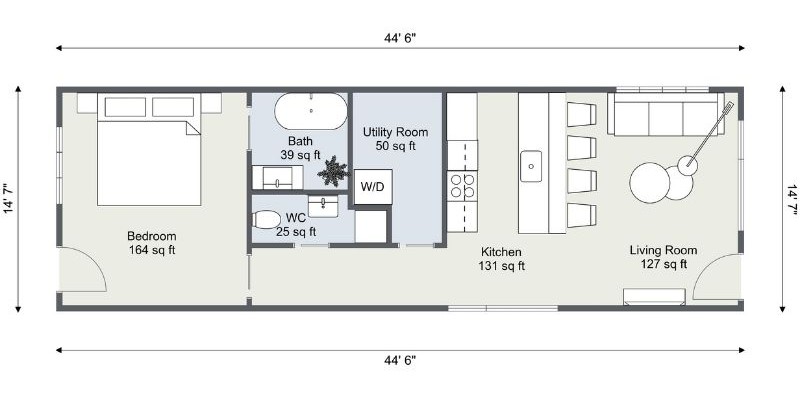
Windows and doors
Windows are crucial in enhancing the living experience within container homes. Large windows maximize natural light and provide a sense of openness within the limited space.
Sliding or folding glass doors are popular, creating a seamless transition between indoor and outdoor living areas, especially in warm climates.
Additionally, strategically placed windows and doors contribute to proper ventilation, a critical factor in container home design.
Floors or levels
Single-story container home floor plans are more popular due to the limited vertical space within a standard shipping container. However, multi-story stacked designs are also feasible with the proper engineering and reinforcement.
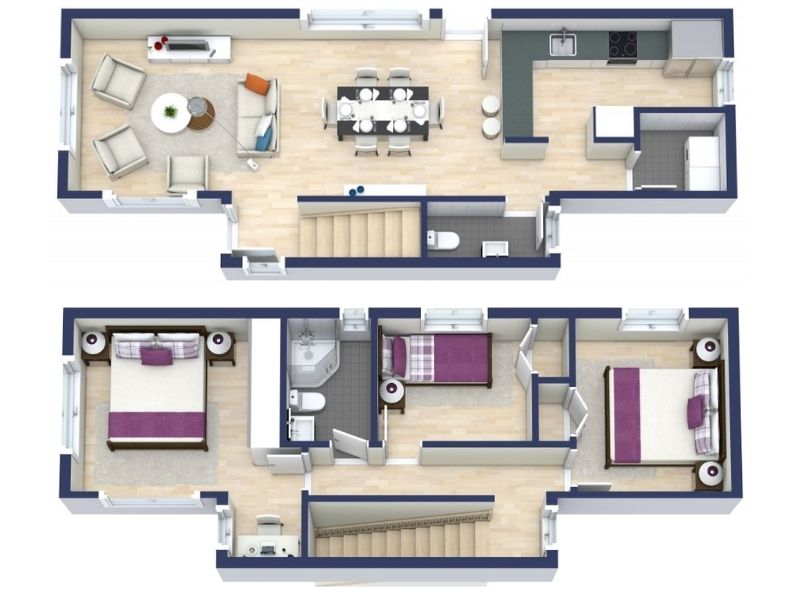
Roof types
Container homes can feature various roof types, including flat, gabled, or shed roofs. The choice often depends on the desired aesthetic and the local climate.
For instance, a shed roof may be preferable in areas with heavy snowfall, as it allows for easy snow shedding.
Fireplaces and chimneys
These are less common in container homes due to space constraints. However, innovative designs may incorporate electric or bioethanol fireplaces to create a cozy atmosphere without the need for a traditional chimney.
Kitchens
The kitchen in a container home is typically compact but can be customized to meet individual preferences.
Space-saving features such as fold-down tables and multifunctional furniture are commonly used to maximize the available square footage.
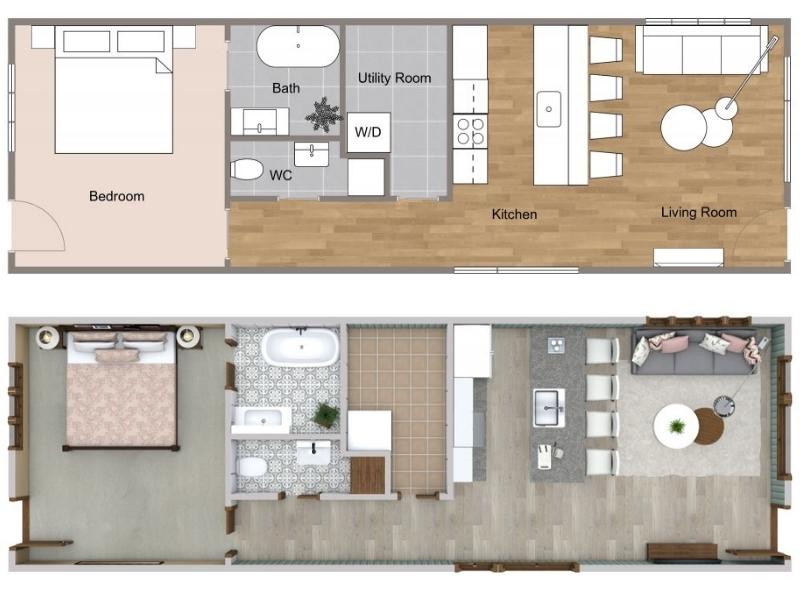
Insulation
Insulation is crucial in container homes to ensure energy efficiency and a comfortable living environment and can be added to the containers' exterior or interior.
Electricity and Plumbing
Ensure your final plan includes adequate space and access points to accommodate electrical wiring, plumbing, and HVAC systems.
Top Uses for Container Homes
Container homes serve various purposes, making them versatile for those seeking alternative housing solutions.
One popular application is as a second home or vacation retreat - the portability of container homes allows owners to place them in scenic locations, creating a unique getaway experience.
Another common use for container homes is as a backyard office, guest suite, or Accessory Dwelling Unit (ADU).
The compact footprint of these structures makes them ideal for placement in urban or suburban backyards without compromising the existing landscape.
The versatility of container homes enables homeowners to create a separate workspace, accommodation for guests, or additional rental income on their property.
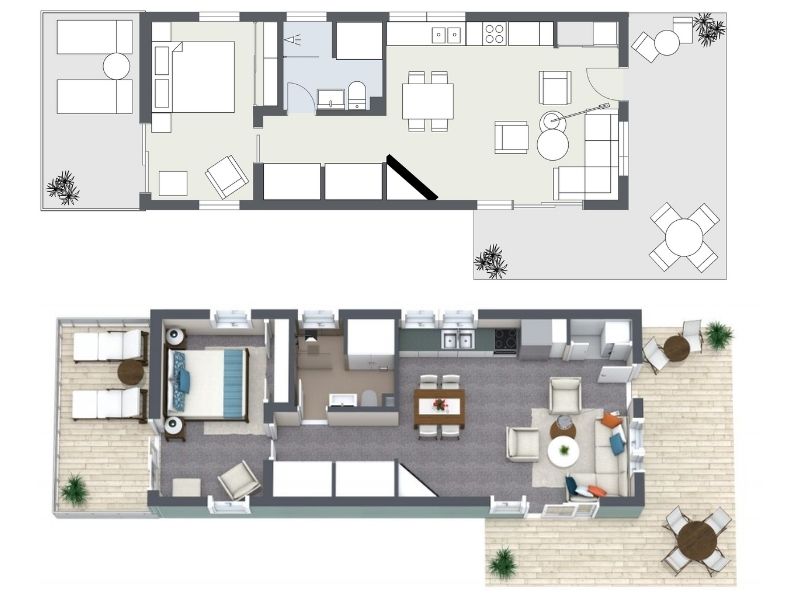
Know Your Local Regulations
Researching and understanding the specific rules and regulations applicable to container homes for your location is essential.
Consulting with local planning departments, building officials, and other relevant authorities can ensure compliance and avoid legal issues.
Additionally, working with professionals experienced in container home construction can help navigate the complexities of regulations and permits associated with this unique form of housing.
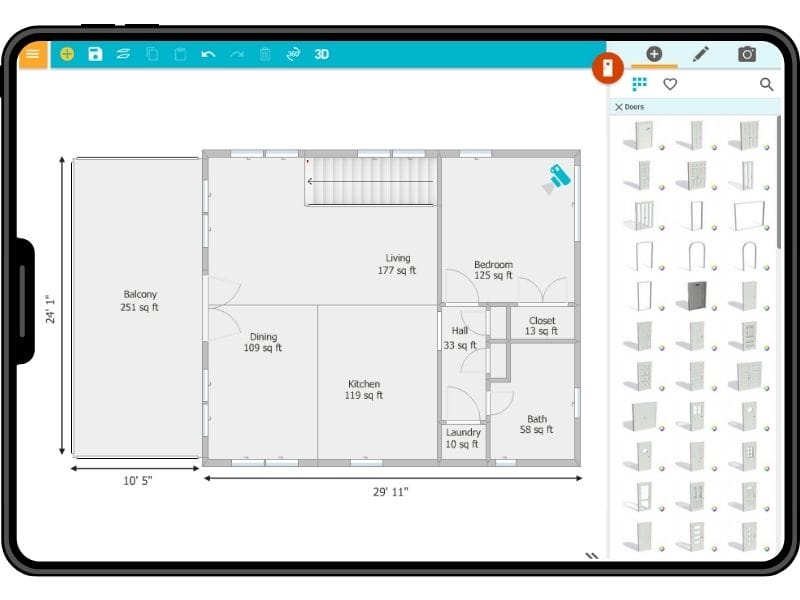
Create Your Container Home
All the floor plans and in this article were created using the RoomSketcher app. With RoomSketcher, you can:
- Draw detailed floor plans in minutes
- Furnish and decorate with 7,000+ items
- See your layout in 2D and 3D
- Preview materials, colors, and finishes
- Share projects with clients, builders, or friends
Related Articles

12 Timeless Shotgun House Floor Plans
Shotgun houses have gained popularity for their efficient use of space and timeless appeal. Explore our 12 unique floor plans that blend history with modern living.

12 Micro Home Floor Plans for Space Efficiency
Discover how innovative design can transform small spaces into functional and stylish homes!
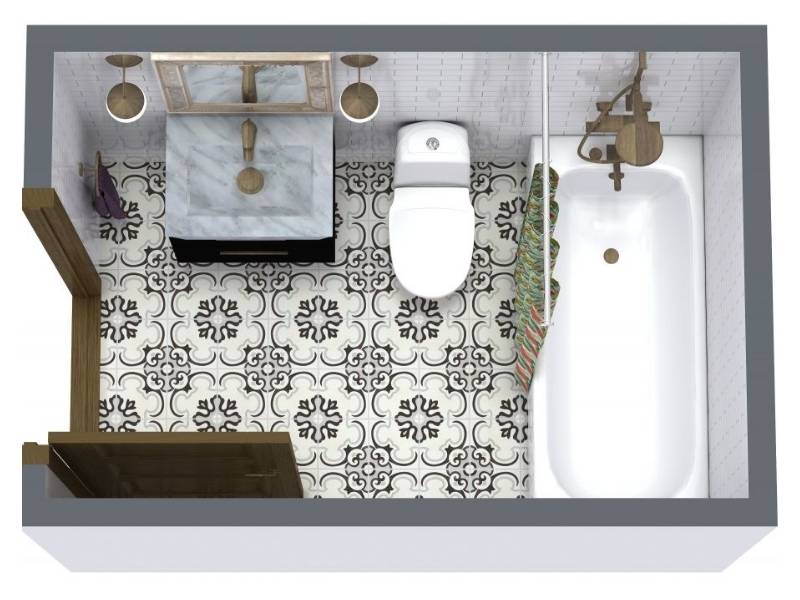
How to Design a Small Bathroom: Layouts and Floor Plan Ideas
A well-planned layout can make even a small bathroom feel spacious and luxurious. If you are considering a remodel or a new home build, it's worth spending the time to think through your bathroom needs and wants, to create the best small bathroom floor plan for your needs.
